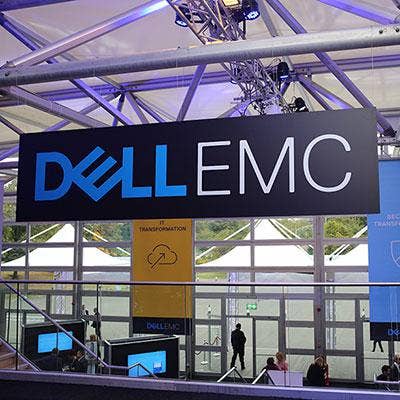Dell EMC Restructures Infrastructure Organizations To 'Streamline' Product Road Maps, Speed Go-To-Market

In a major initiative to streamline Dell EMC's infrastructure product road maps and go-to-market speed, the company is ending its Converged Platforms and Solution Division and moving its hyper-converged and converged infrastructure teams into Dell's core server and storage business units.
"CPSD as we know it today as an independent organization is no longer," said Matt Baker, senior vice president of Dell EMC strategy and planning, in an interview with CRN. "We're moving our hyper-converged and converged solutions closer to our core product groups. … This is all about streamlining how we build and deliver systems, and that should be a benefit not just to our direct customers, but also to our channel partners."
Dell EMC's hyper-converged infrastructure (HCI) and high-performance computing (HPC) teams are being moved under its Server Division, led by Ashley Gorakhpurwalla, president and general manager of the division. Gil Shneorson will continue to lead Dell's VMware-aligned HCI offers, while Dan McConnell will still lead its ecosystem HCI offers. Both will now report to Gorakhpurwalla.
[Related: 'Refuse To Lose': Dell EMC Primes Its Partners For A Storage Revolution]
The company's converged infrastructure (CI) team will now be part of Dell EMC's core Storage Division, led by Jeffrey Boudreau, senior vice president and general manager of the division. Boudreau will lead the VxBlock and Vscale product strategy to get converged infrastructure closer to its core storage business, according to Baker.
"A material portion of the core enterprise storage space is driven by converged infrastructure. The CI elements from a product definition and delivery will be moved into our core storage organization," said Baker. "Tom Burns, who is our networking lead, will help out with a portion of the engineering and validation side of how we build CI systems."
Chad Sakac, who previously led Dell EMC's CPSD organization, will continue to be an infrastructure leader for the company, although he has yet to have a new official title, according to Baker.
In addition, Dell EMC's Ready Solutions group, with the exception of its HPC and Cloud groups, will consolidate under the leadership of Kash Shaikh, vice president of product management and marketing. Shaikh will report to Burns, senior vice president of networking, service provider and enterprise infrastructure at Dell EMC.
Rob Steele, practice manager for RoundTower Technologies, a Cincinnati-based solution provider and Dell EMC partner, said bringing the HCI and CI teams under core groups "makes perfect sense" and "is a great move" by Dell EMC.
"We've done this internally at Roundtower, too, where we initially separated out the hyper-converged and converged solutions and created it almost like it was a separate product set. So customers viewed it as, 'Oh we don’t want that, we just want to keep doing our normal stuff.' They were looking at it as this high entry point or they needed different expertise to get in there, which is somewhat true, but we're seeing more customers are now embracing it as more of the core of their data center," said Steele.
"Just like what server and storage was before, it makes more sense as far as alignment and selling motion goes to have it all under Dell's core businesses versus separate entities," Steele said.
On the channel front, Baker said partners shouldn't expect any changes other than the ability for Dell EMC to deliver "better products faster" to solution providers.
"We've been at this for a little over a year in terms of the combination of Dell EMC, and a lot of the changes are really driven by the operational footprint of how you produce a system, how it goes through system test, etc. So it's really less about product decisions and more about how do we streamline the pipeline of products from conception to delivery for our customers the fastest way with the highest quality and greatest set of features and most amount of leverage," said Baker.
"This move is really all about getting better products into the hands of our customers faster and has very little to do with product decisions and/or people. It's really about simplification and just improving the organization and how we serve our customers," he said.